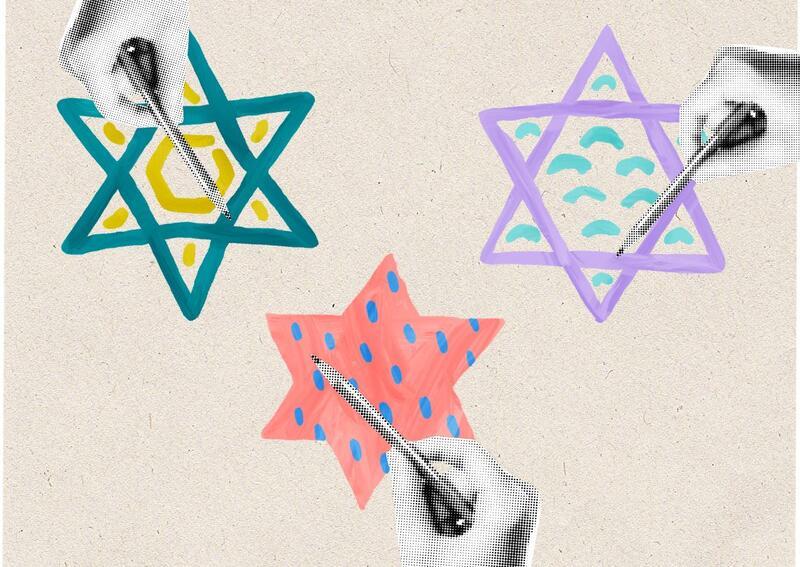Finding Spirituality Through Art
When I think of prayer and spirituality, the image that comes to mind is a person standing in a synagogue, holding a prayer book and reciting the Amidah. However, when I do the same, when I hold a prayer book and recite prayers during services, I never feel as connected to God as I think I am supposed to—rather, I feel connected to my congregation. Praying and singing and celebrating with my Jewish community gives me immense joy and fulfillment, but the prayers and songs always served as a source of comforting familiarity. The words were never a source of conversation with God, but rather one with my community.
I’m still learning, and I’m still trying to figure out exactly what it is that creates a spiritual experience for me, but the closest thing I’ve ever felt is when I create. On weekends when I have the time, I paint for hours. My mind drifts into the canvas until all I see are paintbrushes and colors, the world fading away until there’s nothing but music and light. That flow state is where I feel God the most. When I create, I’m so focused that my mind becomes detached from this world and enters another; suddenly I’m not on the outside watching God, I’m on the inside experiencing, feeling. When I write a poem, power emanates from my pen, the words flow unopposed—that’s when I feel spiritual.
One of the reasons I love art so much is that it encapsulates what it means to be human more than almost anything else; to be human is to make art. Art is the way humans respond to chaos; we take our emotions and experiences and interpretations of the world around us and choose to put something beautiful into the world. Religion is similar in the way that it’s also about making sense of a chaotic world. Believing in a higher power can be very grounding, giving us something to believe in when the world seems out of our control.
When I’m stressed and overwhelmed, painting helps me calm down and translate those emotions into something tangible. It gives my brain something to focus on other than my racing thoughts. Similarly, I love going to Friday night services when I’m overwhelmed because the familiar prayers give me something to rely on when everything else feels out of my control.
But I believe the connections between art and religion go far beyond my personal spiritual experiences. To me, religion and art have always been inherently connected because they’re both about turning individual experiences into community ones. When an artist creates, they first value it purely for themselves and how the act of creating makes them feel. However, when they share their art with others, they get to experience it in a new way, through how it makes others feel. Similarly, when an individual person prays, they experience God in their own way, but when a community comes together and prays, it elevates the experience.
Judaism teaches the concept of Hiddur Mitzvah, which is all about using beautiful objects to enhance religious experiences. The stained-glass windows or mosaic mural on the ark doors at my synagogue are such an ingrained part of the sanctuary that I don’t think about them anymore. They are an important part of the space because praying in a beautiful place reflects the joy and beauty in community and spirituality.
For the same reason, I cover the walls of my room with paintings and prints and art that inspire me; creating in a beautiful space makes it easier to be creative, and for me, at least, it makes it easier to reach that place of spirituality.
Spirituality is all about connecting with something greater than yourself, and Judaism, at its core, has always been about putting good into the world and making it a little better than you found it: tikkun olam.
When I make things, whether that be poetry or paintings, I’m putting not only art, but also authentic parts of myself back into the world—and making it a little more beautiful. I love writing poems and making paintings about feminism and queer experiences, especially around the parts of our history that were erased. Recently, I created a series of poems and paintings that centered around queer love letters throughout history. By making art around these subjects, I hope to draw attention to them, and show others that our stories and history exist despite attempts to erase them.
In the same way that I feel seen whenever I see a piece of art or read a poem that I especially resonate with, I hope that the art I put out into the world helps others feel seen. I hope that my art can help make the world feel a little less huge, complicated, and overwhelming.
This piece was written as part of JWA’s Rising Voices Fellowship.







